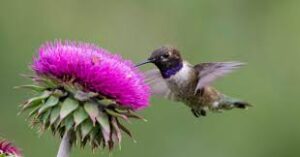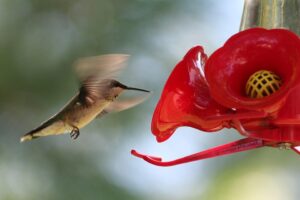Are you eager to attract those delightful, tiny flyers to your garden? Look no further! This comprehensive guide will walk you through the process of creating the perfect hummingbird feeding formula. By following these steps, you’ll not only entice these fascinating creatures but also ensure their health and happiness. So, let’s dive in and discover the secrets to becoming a hummingbird’s favorite host!
Introduction
Hummingbirds are truly nature’s marvels. These miniature acrobats of the air captivate us with their iridescent feathers and incredible flying abilities. However, supporting these high-energy birds requires more than just admiration. That’s where the right feeding formula comes into play.
Creating the perfect hummingbird feeding formula is both an art and a science. It’s not just about mixing sugar and water; it’s about understanding these tiny creatures’ needs and providing them with a safe, nutritious supplement to their natural diet. By mastering this skill, you’ll not only attract more hummingbirds to your garden but also play a crucial role in supporting their well-being.
In this guide, we’ll explore everything you need to know about hummingbird feeding formulas. From understanding their nutritional needs to crafting the perfect recipe, and even maintaining your feeders, we’ve got you covered. So, grab your notepad, and let’s embark on this exciting journey to become a hummingbird’s favorite pit stop!
Understanding Hummingbird Nutrition
Before we dive into the recipe for the perfect hummingbird feeding formula, it’s essential to understand what these tiny dynamos eat in the wild. After all, our goal is to supplement their natural diet, not replace it entirely.
Natural Diet of Hummingbirds
In their natural habitat, hummingbirds have a diverse diet that fuels their incredibly high metabolism. Primarily, they feed on two main food sources:
-
Nectar from flowers: This sweet liquid is the hummingbird’s primary energy source. They’ve evolved long, thin beaks and specialized tongues to extract nectar from deep within flowers.
-
Small insects and spiders: Contrary to popular belief, hummingbirds aren’t exclusively nectar feeders. They also consume tiny insects and spiders, which provide essential proteins and fats.
This combination of sugary nectar and protein-rich insects gives hummingbirds the perfect balance of quick energy and sustained nutrition. Therefore, when we create feeding formulas, we’re essentially mimicking the nectar part of their diet.
Why Supplemental Feeding is Important
Now, you might be wondering, “If hummingbirds have such a great natural diet, why do they need our help?” Well, there are several compelling reasons:
-
Migration support: Hummingbirds undertake incredible journeys during migration. Some species, like the Ruby-throated Hummingbird, even fly non-stop across the Gulf of Mexico! Feeders along their route provide crucial energy boosts for these epic travels.
-
Breeding season energy needs: During breeding season, hummingbirds need extra energy. Females, in particular, require additional resources to produce eggs and care for their young.
-
Habitat loss: As natural habitats shrink due to human activity, supplemental feeding can help bridge the gap in available food sources.
-
Climate change: Shifting weather patterns can affect the timing of flower blooms. Feeders can provide a reliable food source when natural nectar might be scarce.
By offering a well-prepared feeding formula, we’re not just attracting these beautiful birds to our gardens; we’re actively supporting their survival and well-being. With this understanding, let’s move on to creating the perfect hummingbird feeding formula.
The Perfect Hummingbird Feeding Formula Recipe
Now that we understand why supplemental feeding is so important, it’s time to roll up our sleeves and get to the heart of the matter: creating the perfect hummingbird feeding formula. Don’t worry; it’s simpler than you might think!
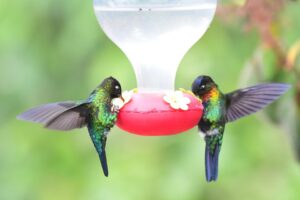
Ingredients You’ll Need
First things first, let’s gather our ingredients. The good news is, you probably already have everything you need in your kitchen. Here’s what you’ll need:
-
White granulated sugar
-
Clean water
That’s it! You might be surprised that we’re not using any exotic ingredients or special bird food mixes. However, this simple combination most closely mimics the natural nectar that hummingbirds get from flowers.
Step-by-Step Instructions
Now, let’s walk through the process of making your hummingbird feeding formula:
-
Measure the sugar and water: The standard ratio is 1 part sugar to 4 parts water. For example, you could use 1 cup of sugar and 4 cups of water. This ratio closely resembles the sugar concentration in natural flower nectar.
-
Mix the solution: In a clean container, combine the sugar and water. Stir vigorously until all the sugar is dissolved. The solution should be clear, not cloudy.
-
Heat the mixture (optional): While not strictly necessary, heating the mixture can help the sugar dissolve more easily and kill any potential bacteria. If you choose to heat it, bring the solution to a brief boil, then remove from heat immediately.
-
Cool and store: If you’ve heated the mixture, allow it to cool completely before filling your feeders. Store any excess in a clean, sealed container in the refrigerator for up to a week.
Remember, the key to a good hummingbird feeding formula is consistency and cleanliness. Always use clean utensils and containers to prevent the growth of harmful bacteria or mold.
Seasonal Adjustments
While the 1:4 ratio works well most of the time, you might want to adjust it slightly based on the season:
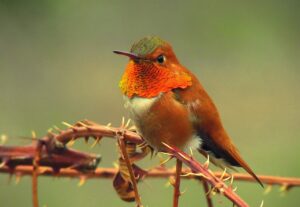
-
Spring and Fall: Stick to the standard 1:4 ratio.
-
Summer: In very hot weather, you can dilute the solution slightly (1:5) to prevent fermentation.
-
Winter: In colder regions where hummingbirds overwinter, a slightly stronger 1:3 ratio can provide extra energy.
By following these simple steps and adjusting as needed, you’ll create a hummingbird feeding formula that rivals the best flower nectar. Next, let’s look at some common mistakes to avoid to ensure your formula is always perfect and safe for your tiny visitors.
Common Mistakes to Avoid
Even with the best intentions, it’s easy to make mistakes when preparing hummingbird feeding formula. Let’s explore some common pitfalls and how to avoid them, ensuring your hummingbird visitors always get the best and safest nectar.
Don’t Use These Ingredients
First and foremost, let’s talk about what NOT to put in your hummingbird feeder. While it might be tempting to experiment with different sweeteners, stick to white granulated sugar. Here’s why you should avoid other common sweeteners:
-
Brown sugar: Contains molasses, which has extra minerals that can be harmful to hummingbirds.
-
Honey: Seems natural, right? Unfortunately, honey can promote dangerous fungal growth when diluted.
-
Artificial sweeteners: These provide no nutritional value to hummingbirds and can be harmful.
-
Red food coloring: It’s unnecessary and potentially toxic to hummingbirds.
Remember, the goal is to mimic natural flower nectar as closely as possible. White sugar does this best while being safe for the birds.
Proper Concentration is Crucial
Getting the right sugar-to-water ratio is more than just following a recipe; it’s about understanding why it matters:
-
Too much sugar: A solution that’s too strong can be difficult for hummingbirds to process and may lead to dehydration.
-
Too little sugar: A weak solution won’t provide enough energy, especially during high-demand times like migration or breeding season.
-
Fermentation risk: Incorrect concentrations can speed up fermentation, especially in warm weather.
By sticking to the recommended ratios (adjusting slightly for seasonal changes as mentioned earlier), you’re providing a safe, energy-rich food source that complements the hummingbirds’ natural diet.
The Importance of Fresh Formula
Another crucial aspect of hummingbird care is ensuring the formula is always fresh. Old or contaminated nectar can be harmful to these delicate birds. Here are some guidelines:
-
Change the formula every 2-3 days in warm weather, or every 4-5 days in cooler weather.
-
Clean the feeder thoroughly each time you refill it.
-
If you notice any signs of mold, cloudiness, or fermentation, discard the old formula immediately, clean the feeder, and refill with fresh nectar.
By avoiding these common mistakes, you’re not just attracting hummingbirds; you’re providing them with a safe, healthy food source. This care and attention will make your garden a favorite spot for these delightful creatures.
Maintaining Your Hummingbird Feeder
Now that you’ve mastered the art of creating the perfect hummingbird feeding formula, let’s focus on another crucial aspect: maintaining your feeder. After all, even the best nectar won’t attract hummingbirds if it’s served in a dirty or poorly maintained feeder.
Cleaning Schedule
Keeping your hummingbird feeder clean is vital for the health of your tiny visitors. Here’s a general cleaning schedule to follow:
-
Hot weather (above 80°F): Clean every 2-3 days
-
Mild weather (70-80°F): Clean every 3-4 days
-
Cool weather (below 70°F): Clean every 4-5 days
However, always keep an eye on your feeder. If you notice any of these signs, it’s time for an immediate cleaning:
-
Cloudy or milky nectar
-
Black or white spots in the liquid or on the feeder (signs of mold)
-
Dead insects in the nectar
-
Sticky or slimy buildup around feeding ports
Guide for when to change the nectar
Letting the nectar ferment encourages mold growth, which makes the cleaning process more difficult. To avoid this, follow the chart below for recommended nectar changes based on the temperature. The hotter it gets, the more frequently you’ll need to replace the nectar.
High temperatures…………Change after
71-75……………………………6 days
76-80……………………………5 days
81-84……………………………4 days
85-88……………………………3 days
89-92……………………………2 days
93+………………………………change daily
Best Practices for Feeder Hygiene
Cleaning your hummingbird feeder doesn’t have to be a chore. Follow these steps for effective and efficient cleaning:
-
Disassemble the feeder: Take apart all removable pieces to ensure thorough cleaning.
-
Rinse with hot water: This helps remove any remaining sugar solution.
-
Scrub gently: Use a bottle brush or an old toothbrush to clean all parts, especially the feeding ports.
-
Soak if necessary: For stubborn residue, soak the parts in a solution of 1 part white vinegar to 4 parts water.
-
Rinse thoroughly: Ensure all soap or vinegar is completely rinsed away.
-
Air dry: Allow all parts to dry completely before refilling to prevent bacterial growth.
Avoid using harsh chemicals or detergents, as any residue could be harmful to hummingbirds. Hot water, vinegar, and a little elbow grease are usually all you need.
How to clean a moldy feeder
Soak the feeder in a mild bleach solution (10% bleach 90% water). Soak the feeder for an hour to kill the mold and bacteria.To help clean out the mold, buy a set of hummingbird feeder brushes that will reach inside the feeder and into the feeder holes.

After it’s cleaned rinse it thoroughly with water 3 or 4 times to make sure all of the bleach is rinsed out.
It’s best to start with a feeder that is easy to take apart and will let you get to the hard to reach areas on the inside of the feeder to clean them.
Now that your hummingbird feeding formula is done, get a feeder that is easy to take apart and clean, and one that will also protect your hummingbird feeding formula from bees ants and wasps.
Here’s my favorite choice of hummingbird feeders to use:
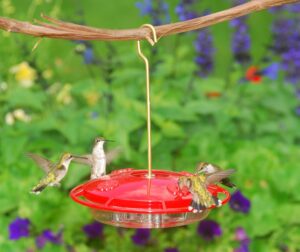
The HummZinger has patented nectar guard tips which are flexible membranes attached to the feed ports that prohibit entry from flying insects, but allow Hummingbirds to feed as usual. The HummZinger also has a built in ant moat that will stop crawling insects from getting to the nectar. It also has raised flower ports that divert rain.
This mid-size nectar feeder has a 12 oz. capacity and can be hung or post mounted with hardware provided. It has four feeding ports for hummingbirds and is made of unbreakable polycarbonate. Easy to clean.
For ease of cleaning and protection from bees, wasps and ants, this feeder can’t be beat.
Feeder Placement Tips
Where you place your feeder can affect how often it needs cleaning and how attractive it is to hummingbirds:
-
Shade: Place feeders in a shaded area to slow nectar fermentation.
-
Protection: Position feeders where they’re protected from wind and rain.
-
Visibility: Ensure feeders are visible to hummingbirds but out of reach of predators.
-
Multiple feeders: If you have more than one feeder, space them out to reduce competition among hummingbirds.
By maintaining a clean feeder and placing it strategically, you’re creating an inviting and safe environment for hummingbirds. This care will not only attract more birds but also encourage them to return year after year.
Here’s a great article that tells everything you need to know about how to choose the best place to hang your hummingbird feeder.
Seasonal Considerations for Hummingbird Feeding
As the seasons change, so do the needs of our hummingbird friends. Understanding these seasonal shifts can help you provide the best care year-round, whether you’re supporting migrating visitors or year-round residents.
Spring and Summer Feeding
Spring and summer are busy times in the hummingbird world. Here’s what you need to know:
-
Increased feeding frequency: As temperatures rise and days lengthen, hummingbirds become more active. They’ll visit feeders more often, so be prepared to refill more frequently.
-
Migration fuel: For many regions, spring marks the return of migratory hummingbirds. These travelers need reliable food sources to replenish their energy after long journeys.
-
Breeding season support: Female hummingbirds especially need extra energy during nesting and chick-rearing periods.
-
Nectar fermentation: Warm temperatures can cause nectar to ferment quickly. Stick to the standard 1:4 sugar-to-water ratio, but clean and refill feeders more often.
-
Natural food abundance: Remember, feeders should supplement natural food sources. Don’t worry if feeder visits decrease when flowers are in full bloom.
Fall and Winter Feeding
As summer fades into fall and winter, hummingbird feeding strategies need to adapt:
-
Migration support: Many hummingbirds begin their southward migration in late summer or early fall. Keeping feeders up can provide crucial energy for these long-distance travelers.
-
When to take feeders down: In most areas, you can leave feeders up until you haven’t seen a hummingbird for two weeks. This ensures late migrants have food available.
-
Winter residents: Some hummingbird species, like Anna’s Hummingbirds on the West Coast, don’t migrate. If you have winter hummingbirds, continue feeding through the cold months.
-
Prevent freezing: In cold climates, use strategies to keep nectar from freezing. This might include bringing feeders in at night or using feeder heaters.
-
Stronger nectar: In very cold weather, you can slightly increase the sugar concentration to 1:3 to provide extra energy. However, only do this when temperatures consistently fall below freezing.
Remember, whether you’re feeding spring migrants, summer residents, or winter visitors, consistency is key. Once you start feeding, try to maintain a reliable food source throughout the season. Hummingbirds remember reliable food sources and will return year after year if they know they can count on your feeders.
By adjusting your feeding practices with the seasons, you’re providing hummingbirds with support when they need it most. This thoughtful approach not only attracts more birds but also contributes to their survival and well-being throughout the year.
Frequently Asked Questions
As we near the end of our comprehensive guide, let’s address some common questions that often arise when it comes to hummingbird feeding formulas and practices.
How often should I change the hummingbird feeding formula?
The frequency of changing your hummingbird feeding formula depends largely on the weather. In warm weather (above 70°F), change the nectar every 2-3 days. In cooler weather, you can extend this to 4-5 days. However, always keep an eye on the nectar and change it immediately if you notice any cloudiness, mold, or fermentation. Remember, fresh is always best when it comes to hummingbird nectar!
Can I add red food coloring to attract more hummingbirds?
While it’s a common misconception that red nectar attracts more hummingbirds, adding food coloring is unnecessary and potentially harmful. Hummingbirds are attracted to the color red, but this is best provided by the feeder itself, not the nectar. Most hummingbird feeders are designed with red parts specifically for this reason. The nectar itself should remain clear, just like the natural nectar found in flowers.
Is it safe to use organic sugar in hummingbird feeding formula?
While organic sugar is great for human consumption, it’s not the best choice for hummingbird nectar. Organic sugars often contain trace minerals and plant materials that, while beneficial for humans, can be harmful to hummingbirds. Plain white granulated sugar is actually the best choice as it most closely mimics the composition of natural flower nectar. When mixed with water in the right ratio, it provides the perfect energy source for these high-metabolism birds.
Should I stop feeding hummingbirds in the fall so they’ll migrate?
This is a common concern, but rest assured, you don’t need to stop feeding hummingbirds to encourage migration. Hummingbirds’ migratory instincts are triggered by changes in daylight length, not food availability. In fact, keeping your feeders up can provide crucial energy for late migrants. It’s generally recommended to keep feeders up until you haven’t seen a hummingbird for at least two weeks.
How can I attract more hummingbirds to my feeder?
While a well-maintained feeder with fresh nectar is a great start, there are several other ways to make your yard more hummingbird-friendly:
-
Plant nectar-rich flowers: Trumpet honeysuckle, bee balm, and cardinal flower are hummingbird favorites.
-
Provide perches: Hummingbirds like to rest near feeders. Small, bare branches can make perfect perches.
-
Offer water: A small, shallow fountain or mister can attract hummingbirds.
-
Avoid pesticides: These can harm hummingbirds and reduce insect populations, which hummingbirds rely on for protein.
- Here’s a complete guide to attracting hummingbirds to your yard. It lists plants, vines and shrubs that are in bloom for spring, summer and fall. Your hummingbirds will always have flowers to feed on.
If you already have a hummingbird feeder, and you want to protect it from ants and other crawling insects, the ant moat below will do the job.
 Trap-It Ant Moat for Hummingbird Feeders
Trap-It Ant Moat for Hummingbird Feeders
The first and still the best to protect your Hummingbird and Oriole feeder from ants and other crawling insects. Insert between hanger and feeder and fill with water, providing a barrier to crawling pests. Red color to attract hummingbirds.
One final note……you don’t have to add red food coloring to your nectar. The red color of your feeder is enough to attract hummingbirds. There is a debate about whether or not the dye in food coloring is harmful to hummingbirds, so don’t use it.
You can hang strips of red ribbon from your feeder or hang a basket of red flowers next to your feeder to attract hummingbirds. I use red petunias in hanging baskets to attract hummingbirds to my feeder. I also plant red salvia in pots to sit on the ground around the feeder to attract hummingbirds.
In Conclusion
Creating the perfect hummingbird feeding formula is a simple yet impactful way to support these incredible birds. By understanding their nutritional needs and following a few straightforward steps, you can transform your garden into a hummingbird haven.
From the initial mixture of sugar and water to the ongoing maintenance of your feeder, every detail matters. As you watch these tiny wonders flit from flower to feeder, remember that you’re not just providing a meal; you’re contributing to their survival and well-being.
Whether you’re a seasoned bird enthusiast or just starting out, the joy of attracting hummingbirds to your garden is a rewarding experience that connects you with nature and fosters a deeper appreciation for these remarkable creatures. So, keep your feeders clean, your nectar fresh, and your garden inviting. With time and care, you’ll become a trusted stop on the hummingbird’s journey, and the rewards will be well worth the effort.
Hummingbird Resources
U.S. Fish and Wildlife Service – Hummingbird Conservation
This site offers detailed information about various hummingbird species, their habitats, and conservation efforts. It also provides resources on how to protect these fascinating birds.
National Park Service – Hummingbird Resources
The National Park Service offers insights into hummingbird species found in national parks, their behaviors, and their role in ecosystems, along with tips for observing them.
Smithsonian National Museum of Natural History – Birds: Hummingbirds
This resource provides educational materials on the role of hummingbirds in pollination and biodiversity, backed by scientific research and exhibits from the Smithsonian.

